Strawberry is a tasty and healthy berry, which is characterized by unpretentiousness in care and resistance to fungus and insect pests. Berry culture allows even novice gardeners to get an excellent crop on the plot. Strawberry Care in Autumn It is not difficult, and provided that such work is carried out correctly in the future, summer residents will be able to significantly simplify the cultivation of this crop.
Content
Proper planting care
Gardeners mistakenly believe that strawberry bushes after the fruiting period does not require any care, and all that needs to be done is just to cover the plants with a film for the winter. In fact, it is necessary to properly prepare them for the winter in the garden, which will be the key to obtaining an excellent crop in the future.
Preparing strawberries in the fall for winter involves the following work:
- Fertilizer application.
- Loosening and weeding of soil.
- Correct pruning.
- Timely watering.
- Treatment for diseases and pests.
- Mulching beds and sheltering plants for the winter.
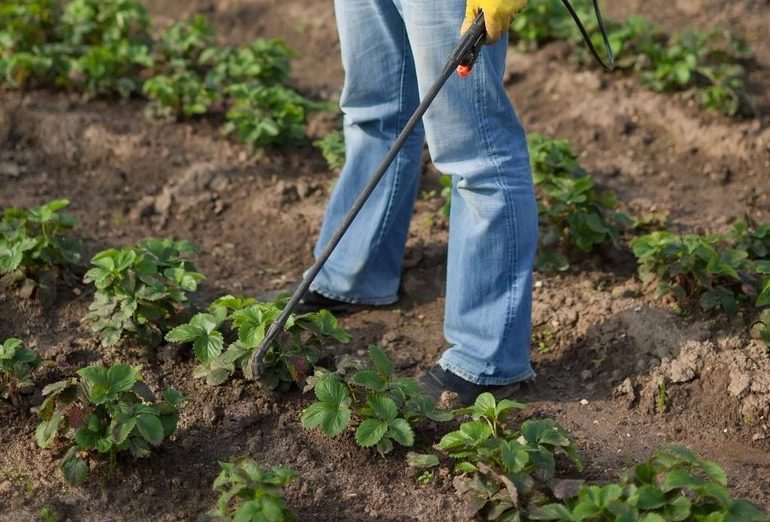
Such work should be carried out not only in full, but also in a timely manner, which allows you to properly prepare the bushes for winter. Subsequently, the plants will quickly take up growth and will be able to bear fruit well, thanking the gardener with a magnificent harvest. The timing of preparing strawberries for winter in the garden will vary, depending on its variety and climatic features in the region.
Autumn strawberry top dressing
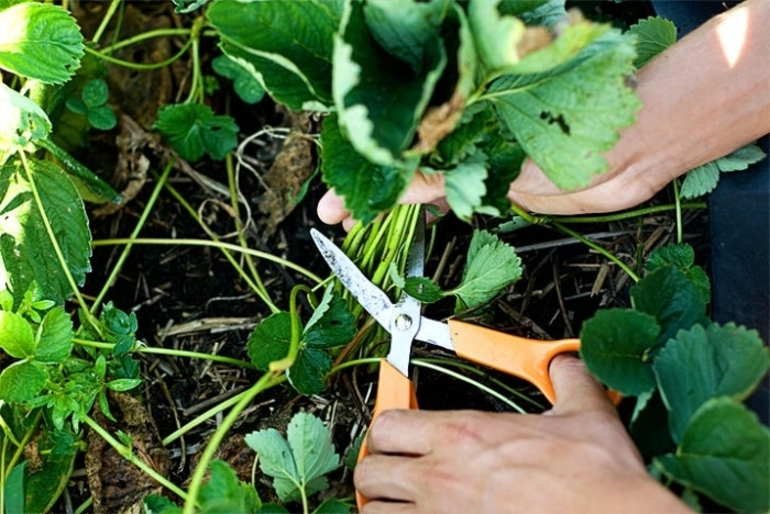
Gardeners often neglect the need plant nutrition, motivating this by the fact that in this case it is impossible to grow tasty and completely safe for the body berries. However, subject to the norms of fertilizer application, such top dressing with organic and mineral compounds is completely harmless, while the gardener can significantly improve productivity by receiving tasty, juicy and large strawberries on the plot.
In total, during the growing season, the plant need to feed three times. The first time they perform fertilizing before flowering, the second time after the end of the growing season and in September when preparing the bushes for wintering. To ensure proper growth and subsequent abundant fruiting, you need to combine mineral and organic fertilizers.
Excellent results are shown in the autumn application of 10 percent mullein, which is mixed with ash, into the soil. You can also insist bird droppings, which are subsequently in liquid form introduced under each bush, which allows you to provide plants with all the trace elements they need.
Properly selected fertilizer should contain the following trace elements:
- Nitrogen.
- Potassium.
- Phosphorus.
- Molybdenum.
- Manganese.
- Iron.
Fertilizing with mineral fertilizers can be carried out both by commercially purchased formulations and self-prepared mixtures that include nitrogen, phosphorus and potassium. Beginning gardeners are recommended to use specialized purchased formulations that have the optimal dosage for the proper preparation of plants for winter. This allows you to easily take care of the plantings and guarantee one hundred percent survival of the bushes even in harsh winters in central Russia and in the northern regions.
Mandatory watering
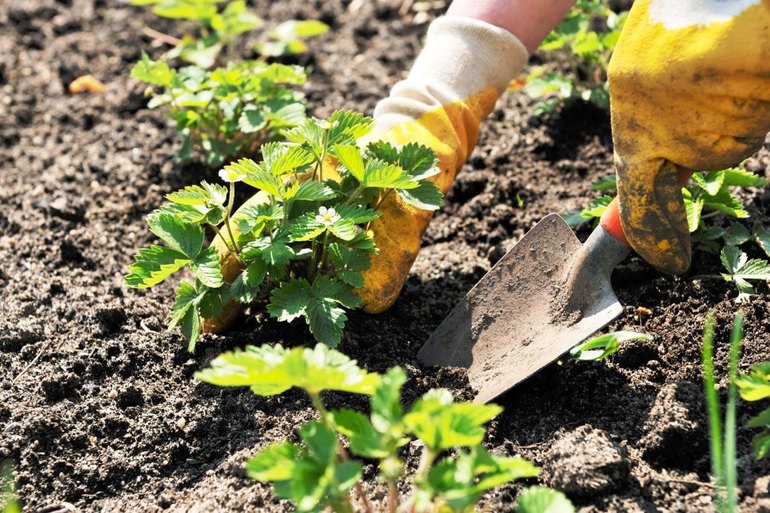
After completion of fruiting, strawberries need proper care and timely watering.Bushes are irrigated once every two weeks, up to before the onset of cold weather and shelter of beds mulch or film. The frequency of watering must be correlated with the climate in the region. It is not necessary to water plants in rainy autumnif dry weather is observed in September-October, then it is recommended to carry out such irrigation once every seven days.
Watering the beds is done manually from a bucket and watering can. The use of hoses and direct irrigation from the well is prohibited. The root system of plants is located at the very surface, so it can be damaged by such careless handling. The beds are watered with warm and settled water. If you take cold water from the well, this will lead to weakening of the bushes and the appearance of various infectious diseases.
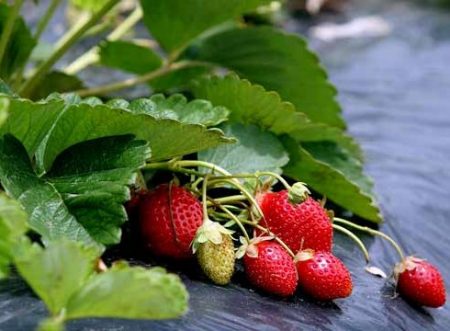 You may be interested in:
You may be interested in:Disease and Pest Treatment
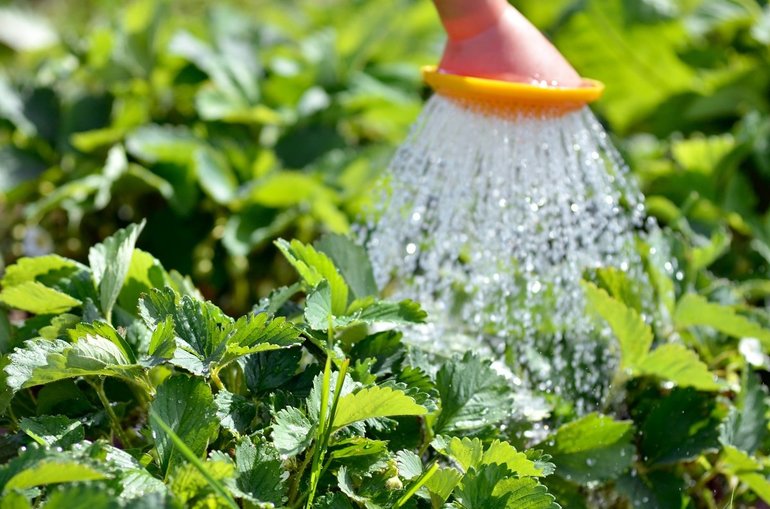
In the fall, in September and October, signs of various infectious and fungal diseases may be noticeable on strawberry bushes. The gardener needs to spray and treat it with appropriate drugs for diseases and pests, regardless of the presence of such symptoms of strawberry damage, using garden compressors. In parallel, weeding is carried out on the site, which will allow you to get rid of all weeds that take part of the nutrition from plants and are carriers of various infectious diseases.
Various insecticides and herbicides can be used to process strawberries. At the end of summer, a complex action herbicide called Lenacil can be used. Such processing of strawberries in autumn is carried out from a spray gun, and the preparation is prepared in full accordance with the instructions. Depending on the herbicides and insecticides used, one or two processing of the beds can be carried out.
Pruning plants
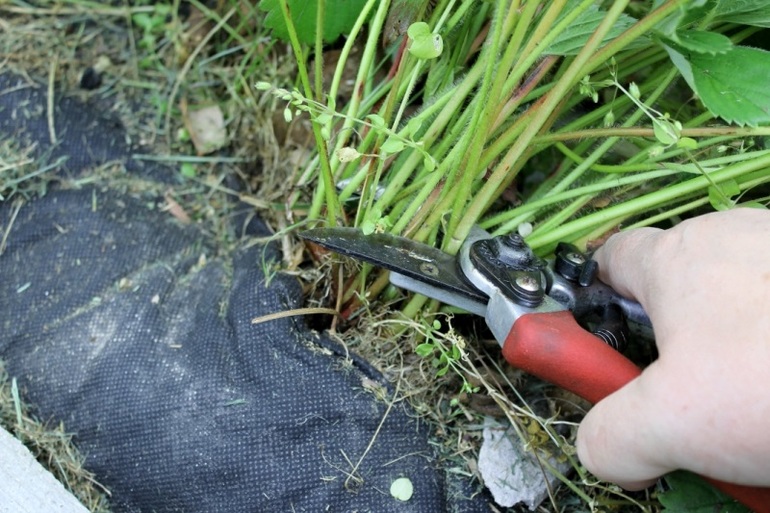
Gardeners are still arguing about whether strawberry pruning is required in the fall or whether such a procedure only weakens the bushes, which freeze in the winter and subsequently die or poorly bear fruit. Pruning proponents argue that spores of fungal diseases and harmful insects settle on peduncles, unnecessary antennae, and old leaves, which is why plants need this procedure. However, even after the work is carried out correctly, the bush spends energy on the formation of green mass, and can go weakened for the winter, which subsequently negatively affects its fruiting rates.
If strawberry pruning is done, it is only sanitary with the removal of affected and old leaves. Cut off unnecessary tendrils, which significantly weaken the mother plants. But it is not necessary to completely cut off all the foliage near the bush, leaving only one rhizome, since in the future the strawberry does not tolerate winter well, and in the spring it puts all its strength into building green mass, so it is impossible to achieve good fruiting.
Pruning plants is carried out necessarily with sharp scissors or secateurs, which are pre-disinfected, which will prevent the defeat of strawberries with various infectious diseases. After such work, all trimmed foliage is removed from the garden and burned away from the garden. The gardener will only need to water the soil after such a procedure and feed the plants with a light solution of chicken droppings or humus.
Mulching beds

Various organic materials can be used as mulch for strawberry beds.The ground is covered with sawdust, a layer of straw, humus or green needles. Subsequently, the mulch re-grows on the beds, supplying the plants with the necessary organic matter. Such warming will prevent freezing of wild strawberries in spring, when late frosts are still possible. The mulch layer should be no more than 10 centimeters, which will protect the beds from freezing in snowless winters.
Transplanting seedlings
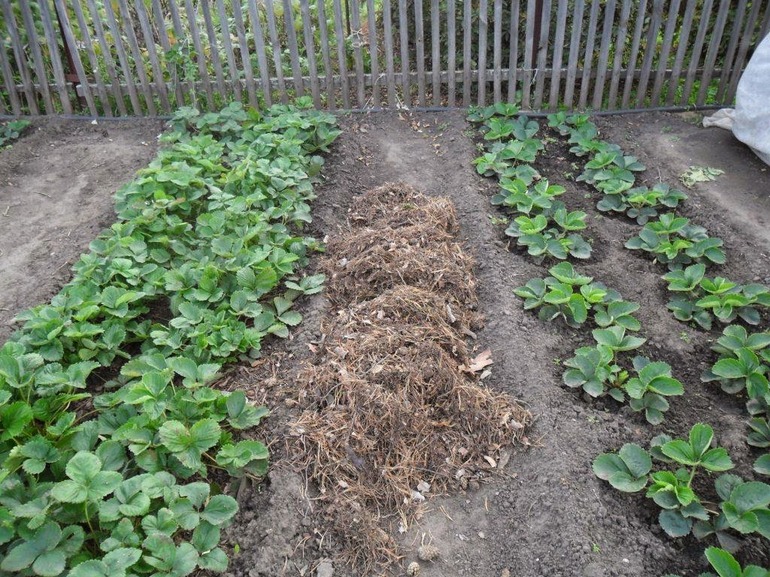
Strawberry transplant and wild strawberries can be performed in late August or early September. Such work is carried out no less than a month and a half before the onset of cold weather. Otherwise, the plants will not take root in a new place., in the subsequent gardener, it will be necessary to purchase expensive seedlings again, and it is already impossible to get a good harvest next year.
Seedlings are carefully transferred to a new place, after planting, the earth is slightly compacted, while the root neck should be located at ground level. Water the soil and mulch if possible. Subsequent care for strawberries in autumn is not difficult, the gardener needs to feed the plants, perform regular watering and treat bushes from pests and infectious diseases.
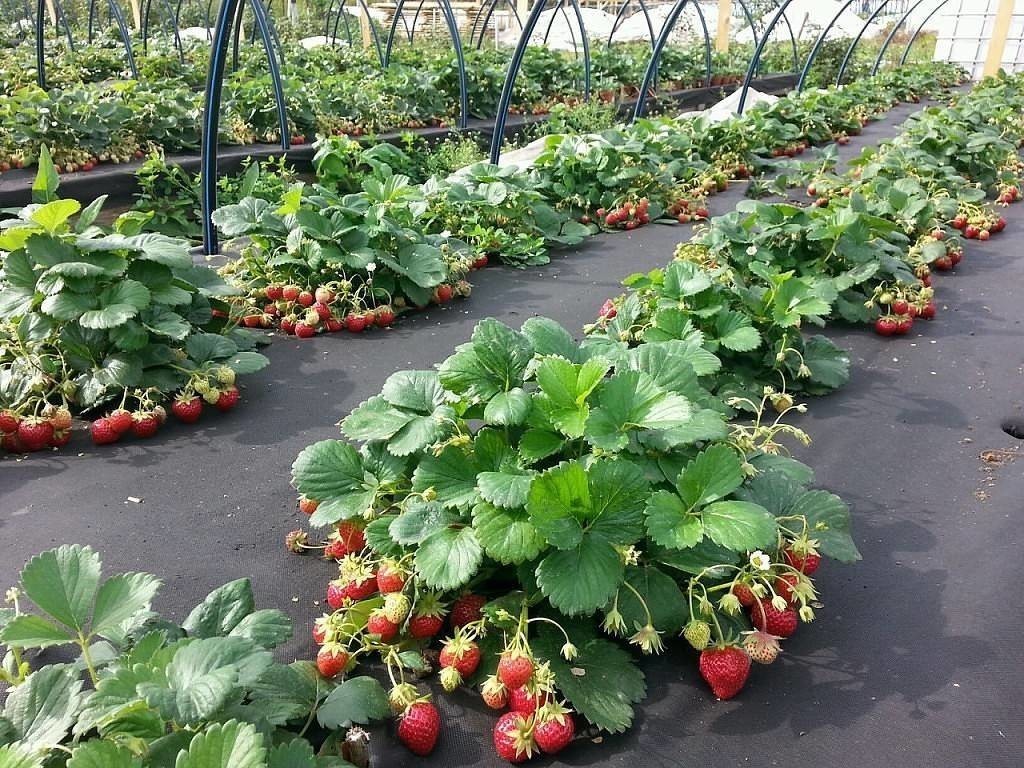 You may be interested in:
You may be interested in:Modern technologies for growing berries
Very popular today is the technology of growing Victoria strawberries using spunbond or other similar covering materials. The advantages of such agricultural cultivation include the following:
- The highest possible yield.
- No need to mulch beds and weeding them.
- Qualitative warming of bushes and their protection against late frosts.
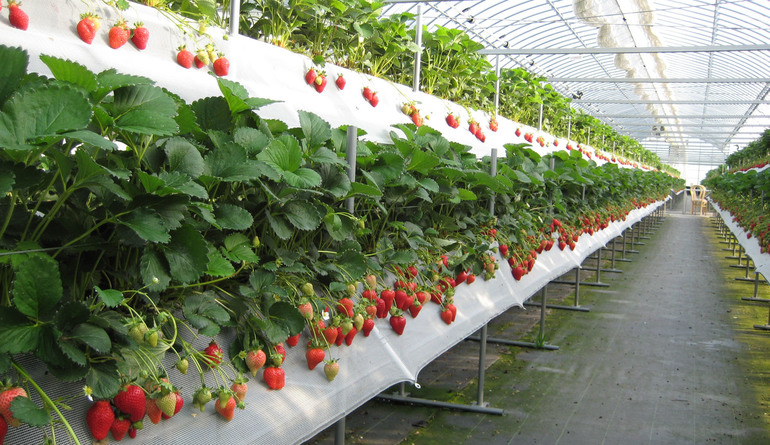
The covering material is lined on the bed, which allows to completely suppress the growth of unwanted vegetation, the soil is warming up perfectly, optimal conditions are created for the growth and fruiting of berry crops. Strawberry bushes are planted in the cutouts available in the spunbond, which grow well and bear fruit well. The gardener needs regularly feed the berry and perform accurate spot irrigation through existing planting holes.
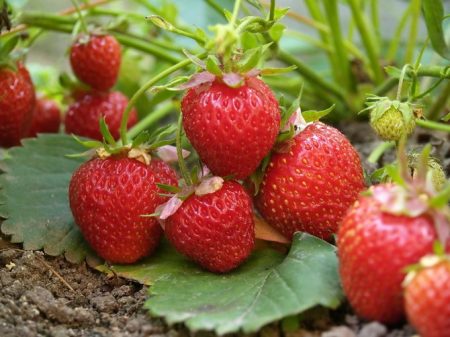 You may be interested in:
You may be interested in:In the fall, when growing strawberries in the Moscow Region on such a covering material, it is necessary to trim the bushes, remove weak, dried and damaged leaves, fertilize and water the plants pointwise. In regions with harsh and frosty winters, additional warming is required for plantings; they are mulched with needles, sawdust or peat.More than any care strawberries when grown using spunbond or with any other covering material will not require.
Strawberry is an undemanding berry culture that will allow the gardener to get an excellent harvest. Caring for a plant in autumn and preparing for winter is not difficult, you need to clean the beds, remove old and damaged leaves, cut the antennae, feed the planting with organic and mineral fertilizers, water and mulch the beds. Such simple actions will be the key to obtaining an excellent harvest.

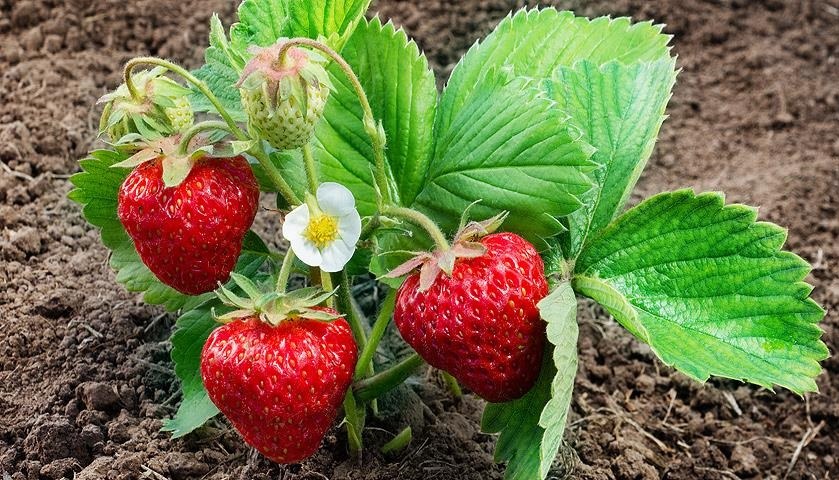
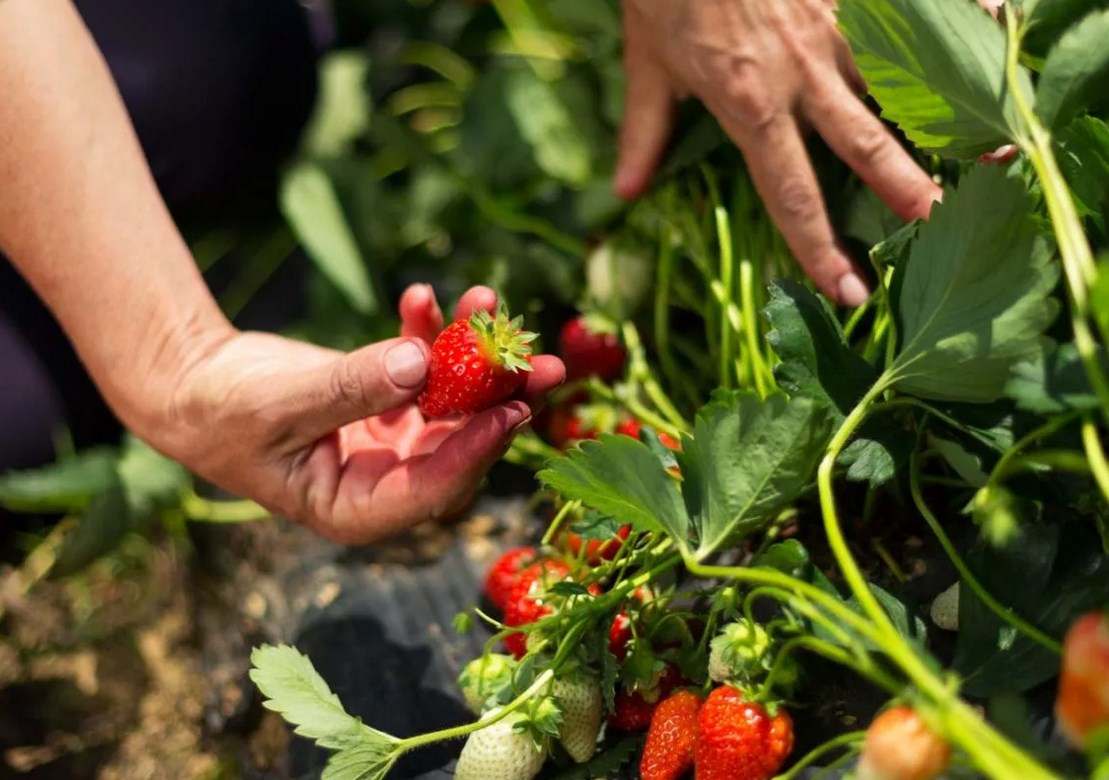
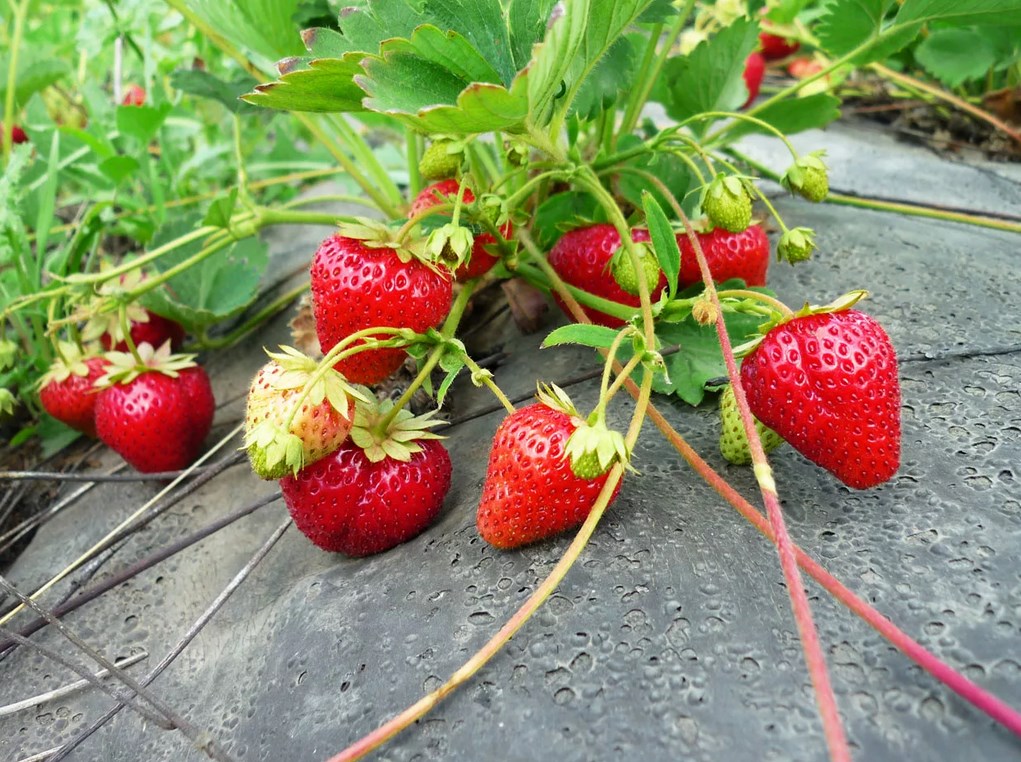
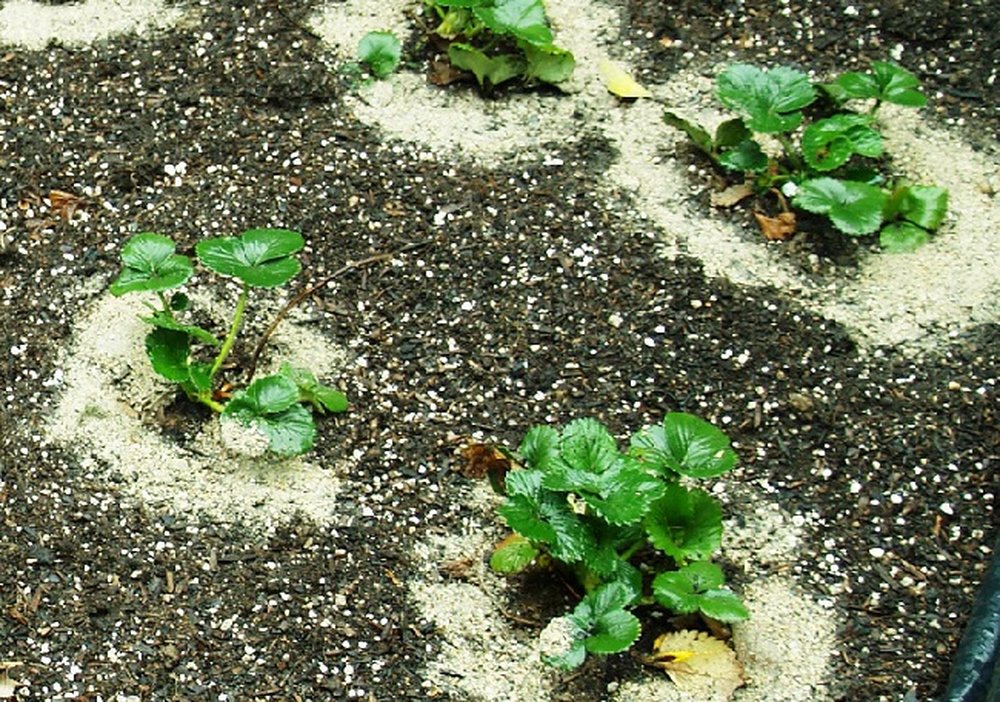 When to plant strawberries for seedlings from seeds in 2024
When to plant strawberries for seedlings from seeds in 2024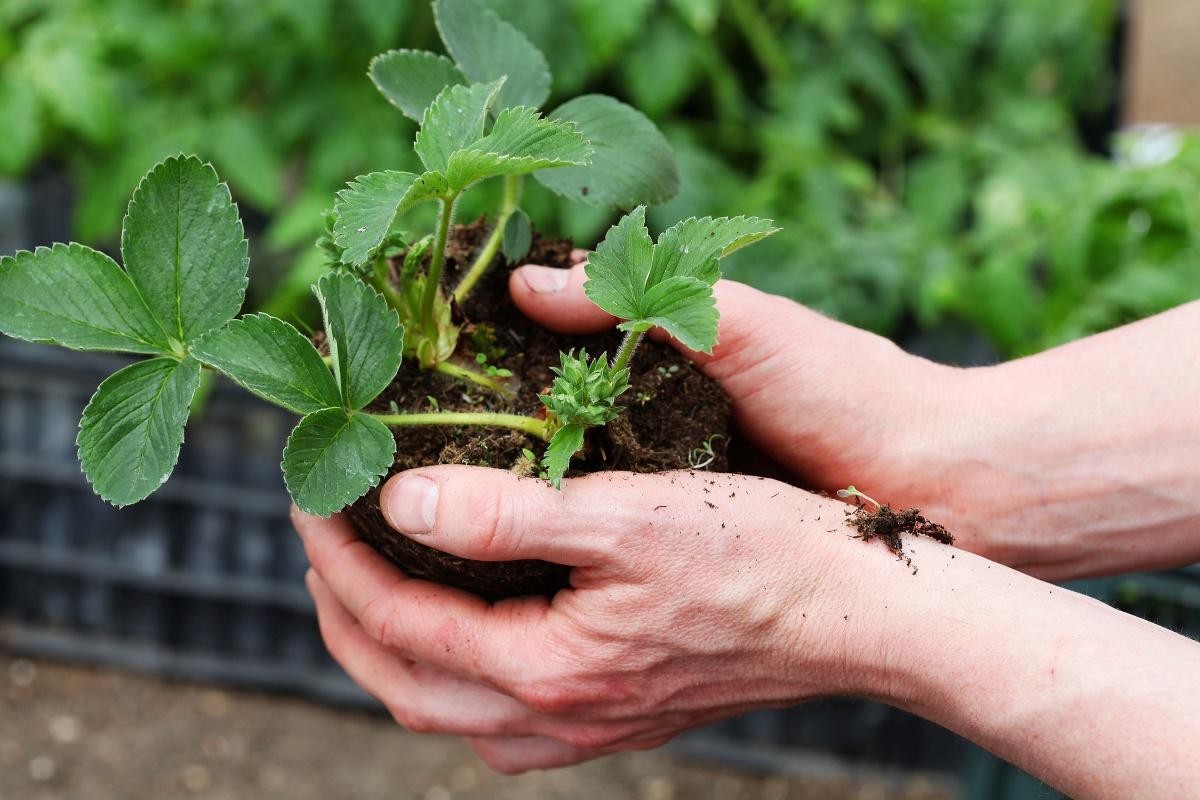 What month is better to choose for a strawberry transplant in the fall
What month is better to choose for a strawberry transplant in the fall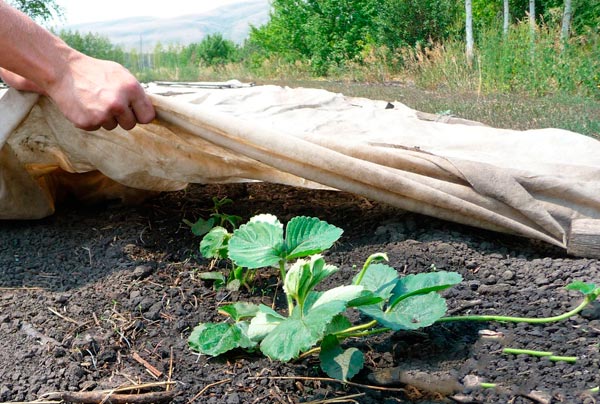 How to cover strawberries for the winter
How to cover strawberries for the winter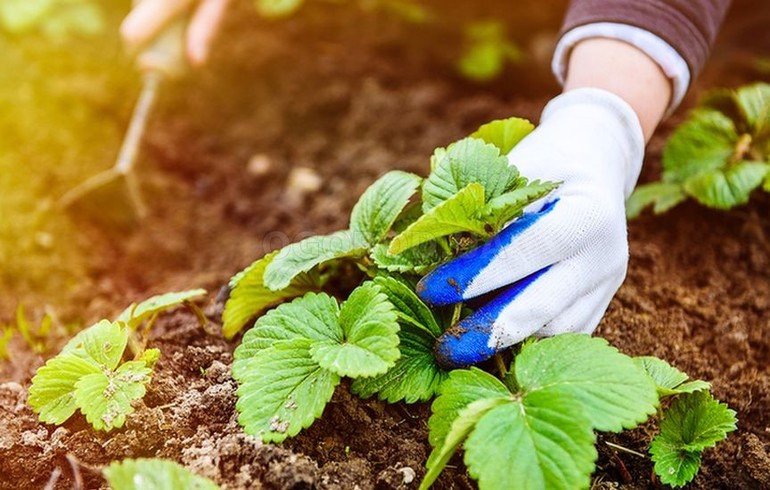 Proper care and pruning strawberries in the fall in the suburbs
Proper care and pruning strawberries in the fall in the suburbs